News
Seven Years Since Russia’s Military Intervention to Thwart NATO in Syria: A Very Different War to Ukraine
September 30 2022 marks seven years since the beginning of Russian military operations in Syria, with the country’s involvement widely credited with turning the tide of the war and thereby transforming the balance of power in the Middle East. Drawing several stark contrasts to the current Russian war effort in Ukraine, operations were a result of requests by the Syrian government and its allies for backing against an ongoing insurgency supported by multiple major Western powers as well as Turkey, Israel and several allied states in the Persian Gulf. The conflict saw Russian forces primarily provide air support and equipment, while the bulk of fighting on the ground was done by the Syrian Arab Army and affiliated militias, by Iranian-backed militia groups including a number from Afghanistan, by the Lebanese militia Hezbollah, and by North Korean special forces units. By contrast Russia’s more recent war in Ukraine has seen the Russian Military fight a major ground war without external support, with even neighbouring Belarus providing only bases and logistical support, while it has engaged a state rather than non state actors and done so with much more questionable legal pretexts.
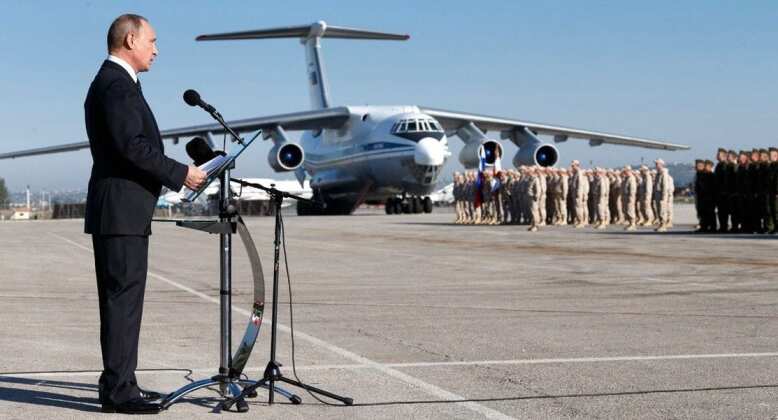
Low key deployments of warplanes, T-90 tanks, artillery and several hundred personnel to Khmeimim Airport in Syria’s Latakia governate began in late August heralding the beginning of a month long buildup before operations began. A treaty signed by Russia and Syria on August 26 allowed for the transformation of the airport into a major military facility – Khmeimim Airbase which has continued to be expanded into the 2020s as a base for hosting strategic assts aimed at NATO’s southern flank. In 2015, however, assets at the facility were all tactical and intended to support counterinsurgency operations rather than an inter-state war. Housing for approximately 1500 personnel was constructed, defences improved, runways re-laid and a new control tower built. BTR-82 armoured vehicles and Naval Infantry from the Black Sea Fleet – veterans of the Crimean campaign a year before – were deployed to guard the facility and had clashed with Islamist militia groups seeking to threaten the base before the end of the month.
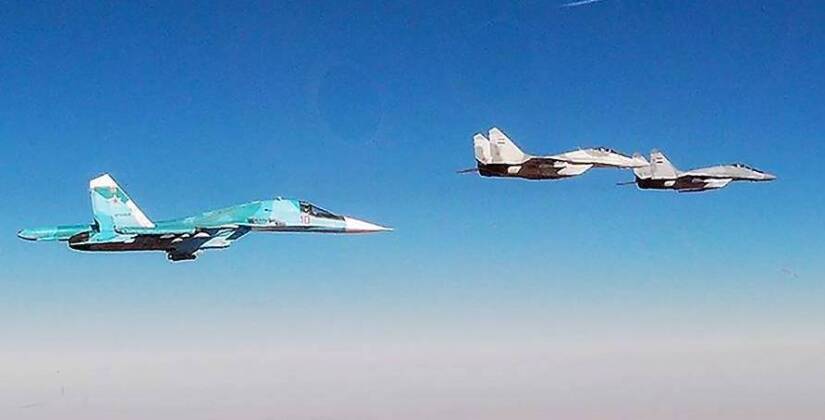
On September 30 2015 a Russian three-star general visited the U.S. Embassy in Baghdad and gave notice that Russian airstrikes on insurgent targets in Syria would begin imminently, and that U.S. forces present would have to leave immediately. As the U.S. military presence in the country and those of its allies were illegal, having no authorisation from the Syrian government or from the United Nations, there was little Washington could do short of drastically escalating its war effort against Syria which would inevitably have involved Russia, Hezbollah and Iran as well. Western media reports nevertheless highlighted that many of the insurgent groups being targeted were receiving backing from the CIA and other Western and Turkish agencies, drawing widespread allusions to a new NATO-Russian proxy war. 12 Su-24M and 4 Su-34 strike fighters, 12 Su-25 attack jets, 4 Su-30SM multirole fighters and 12 Mi-24P attack helicopters were involved in the first weeks of operations, and were accompanied by a surge in parts and munitions supplies to the Syrian Air Force from Russian inventories to support an escalation of its own parallel air campaign. This allowed the Syrian Air Force to raise its rate strikes by 40 percent in October. The result was that while jihadist militants had controlled the large majority of Syrian territory, they very quickly began to lose ground against a multinational coalition committed to preserving the Syrian government in power.
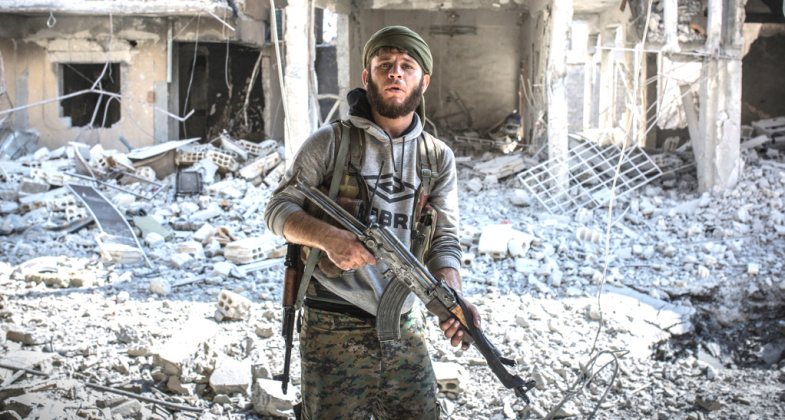
Significant calls were made in the U.S., including from several presidential candidates such as Hillary Clinton, for Western imposition of a no fly zone over Syria and the shooting down of Russian and Syrian aircraft, with Senator Lindsey Graham, Governor Jeb Bush and New Jersey Governor Chris Christie being among those to make such calls. As Chairman of the Joint Chiefs of Staff General Joseph Dunford was among those to note however: “for now, for us to control all the airspace in Syria would require us to go to war with Syria and Russia.” As the region’s leading supporter of the insurgency Turkey came closest to seeing such intentions through, and on November 24 provided air support to Turkic jihadist militias operating in Western Syria by shooting down a Russian Su-24M strike fighter overhead. Taken by surprise, the Su-24M had no significant anti-aircraft weapons even for basic defence, with its ejecting pilot captured and executed by Turkic Islamists soon after landing on the ground. The result was an escalation of the Russian presence including deployment of Su-27SM3 and later Su-35 air superiority fighters, the arming of Su-34s with defensive air to air weapons, and deployment of S-300V4, S-400 and other air defence systems to guard Khmeimim Airbase and Russian forces in the theatre.
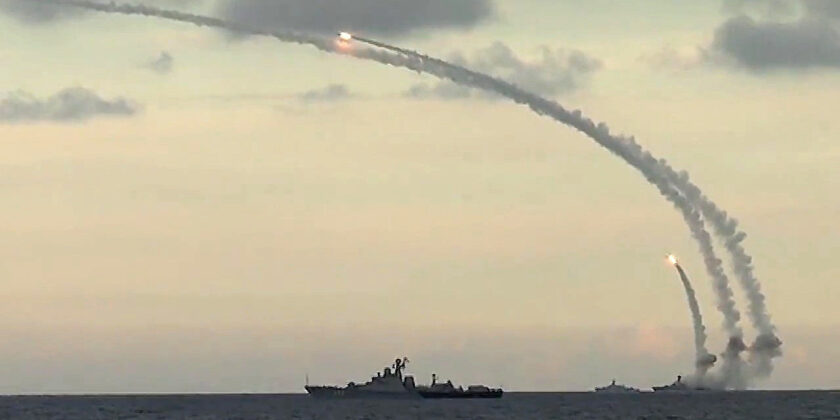
The Russian air campaign was key not only to defeating Western and Turkish backed insurgents in Syria, marking a major blow to NATO’s designs for the country and wider region, but also preempted Western and Turkish efforts to establish safe zones and no fly zones within Syrian territory under which insurgents would have been able to operate freely. With NATO assets already well entrenched in Syria by September 2015, over four years after war in the country had begun, the northwestern and northeastern regions respectively would remain under NATO control – the former manned by Islamist insurgents under Turkish protection and the latter by a range of insurgent groups under the protection of the U.S. and other Western powers. Syrian oil has been extracted on a large scale from both areas and exported through Turkey and Iraq to help fund the Turkish and Western occupations, and while hopes for Syria’s military defeat were quashed by the Russian intervention economic warfare remains central to efforts to undermine Damascus today.
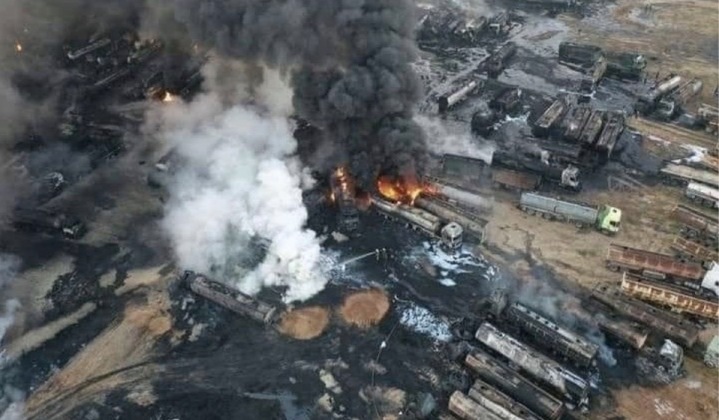
Despite a failure to secure the oil rich north, the majority of Syrian territory was nevertheless quickly restored to government control with Russian support with a major turning point being the rapid capture of the largest city Aleppo in late 2016. Syrian ground, air and air defence capabilities having since been bolstered significantly with Russian military aid, while Chinese and Iranian investment have contributed to a slow economic recovery despite Western economic sanctions. Russia’s military operation in Syria is widely considered one of the most successful in the country’s history with losses remaining minimal and objectives secured quickly and efficiently. The confidence provided by the operation, however, may well have been responsible for the ‘victory disease,’ as it is sometimes referred to, which fuelled the complacency widely seen to have hampered Russian effectiveness when intervening in Ukraine seven years later – a campaign which has had very different results.












